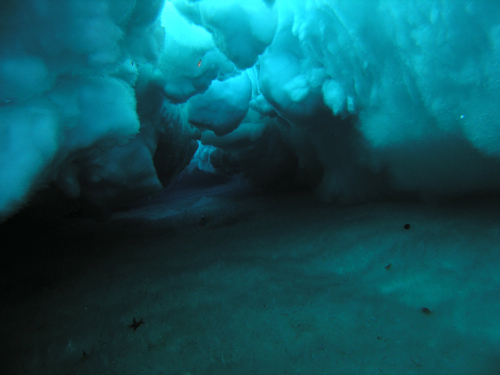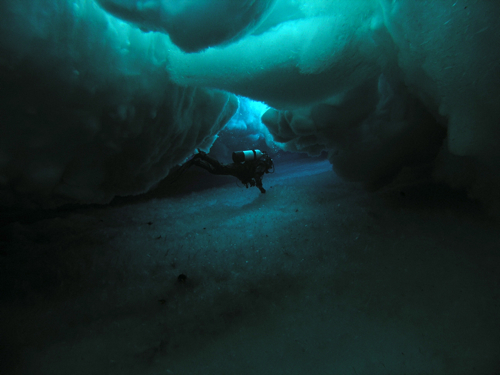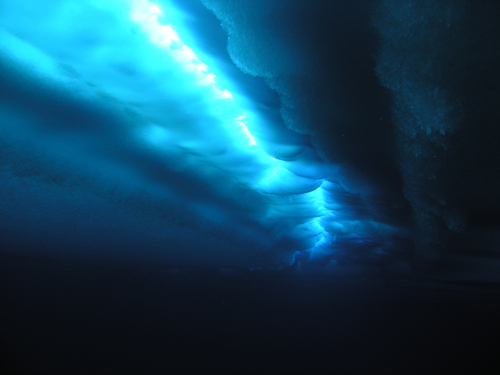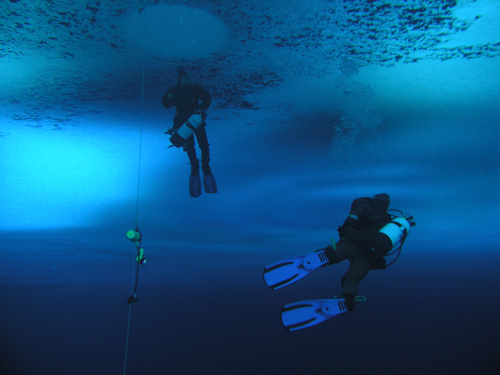Science is always in constant motion
One of the hardest parts of documenting this expedition is the fact that every day the science is moving forward. We have been here for just over one month and some members of our team have only three weeks remaining before they depart. Every minute of every day counts and is being used to the fullest. If I take a day to share something with you, the science is still moving forward at full speed.
To try and catch up, here's a little update from each of the expedition's areas.
Diving Operations
We have been really busy in the field. The divers are up to 22 dives each, representing more than 35 hours of time under the ice. We have been busy collecting two species of worms, Capitella and Spiophanes. We have also been exploring other dive sites. Here are some of the amazing scenes we've experienced under the ice.







Lab Operations
Stephanie, Annamarie, and Adam have been hard at work planning the different experiments that they will conduct involving the Capitella worms that we have collected. In preparation, Stephanie and Annamarie have been hard at work. Here's what their "To Do" List has looked like:
- Count worms
- Examine worm health and life stage
- Plan experiments, including necessary materials
- Cut insulation for containers
- Setup and test equipment
- Create solutions and buffers for experiments

Worm Count
We are up to 1,000 Capitella worms in the Aquarium cultures. Annamarie gave Ms. W. a look under the microscope at Capitella. Here's what she saw.


Team Bonding
The team has really been coming together to form a really productive and cohesive group. In a field research situation, it's really important that everyone can work together and get along. We eat meals together, play board games, watch movies, got to McMurdo Station events, and (of course) work hard!

Mystery Contest
Our mystery photos have been such a big hit that I thought we should kick it up a notch. Today's photo is a "Howdidyadothat?" The first person that can respond in the forum that can explain what is going on in this shot will receive a personal postcard from Antarctica. Submit your explanations by clicking here.



Comments